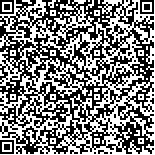附件
|
| 引用本文: | 丁惠君,钟家有,吴亦潇,张维昊,邹斌春,楼倩,杨平,方媛瑗.鄱阳湖流域南昌市城市湖泊水体抗生素污染特征及生态风险分析.湖泊科学,2017,29(4):848-858. DOI:10.18307/2017.0408 |
| DING Huijun,ZHONG Jiayou,WU Yixiao,ZHANG Weihao,ZOU Binchun,LOU Qian,YANG Ping,FANG Yuanyuan.Characteristics and ecological risk assessment of antibiotics in five city lakes in Nanchang City, Lake Poyang Catchment. J. Lake Sci.2017,29(4):848-858. DOI:10.18307/2017.0408 |
|
| |
|
|
| 本文已被:浏览 8761次 下载 6195次 |

码上扫一扫! |
|
|
| 鄱阳湖流域南昌市城市湖泊水体抗生素污染特征及生态风险分析 |
|
丁惠君1,2, 钟家有1, 吴亦潇2, 张维昊2,3, 邹斌春1, 楼倩1, 杨平1, 方媛瑗1
|
|
1.江西省水利科学研究院江西省鄱阳湖水资源与环境重点实验室, 南昌 330029;2.武汉大学资源与环境科学学院, 武汉 430072;3.湖北省水资源安全协同创新中心, 武汉 430072
|
|
| 摘要: |
| 采用固相萃取-超高效液相色谱-质谱法对南昌市5个城市湖泊——艾溪湖、瑶湖、青山湖、象湖和东西湖水体的抗生素进行监测,并分析其污染来源和生态风险. 结果表明,南昌市5个城市湖泊水体中四环素类、磺胺类、喹诺酮类、林可霉素及大环内酯类5类抗生素的检出浓度范围分别为ND~6.3、ND~32.0、ND~97.2、ND~54.7和ND~98.4 ng/L;红霉素和林可霉素是5个城市湖泊水体中的主要抗生素类型;相比于其他湖泊,南昌市城市湖泊水体中主要检出抗生素浓度总体处于中等水平,其中恩诺沙星的检出浓度高于其他对比湖泊. 南昌市城市湖泊中6种主要抗生素的风险商均小于0.1,表明均为最低生态风险;5个城市湖泊的主要生态风险因子分别是艾溪湖为红霉素,瑶湖为磺胺二甲嘧啶,青山湖为罗红霉素,象湖为红霉素,东西湖为磺胺嘧啶. 本研究可为南昌市城市湖泊水环境管理,特别是新型污染物的环境管理提供基础依据. |
| 关键词: 抗生素 新型污染物 城市湖泊 水体 污染 生态风险 南昌市 鄱阳湖 |
| DOI:10.18307/2017.0408 |
| 分类号: |
| 基金项目:江西省水利科技项目(KT201607)、水利部鄱阳湖水资源水生态环境研究中心开放基金项目(ZXKT201507)和水利部科技推广项目(TG1520)联合资助. |
|
| Characteristics and ecological risk assessment of antibiotics in five city lakes in Nanchang City, Lake Poyang Catchment |
|
DING Huijun1,2, ZHONG Jiayou1, WU Yixiao2, ZHANG Weihao2,3, ZOU Binchun1, LOU Qian1, YANG Ping1, FANG Yuanyuan1
|
|
1.Jiangxi Provincial Key Laboratory of Water Resources and Environment of Poyang Lake, Jiangxi Institute of Water Sciences, Nanchang 330029, P.R.China;2.School of Resource and Environmental Science, Wuhan University, Wuhan 430079, P.R.China;3.Hubei Provincial Collaborative Innovation Center for Water Resources Security, Wuhan 430072, P.R.China
|
| Abstract: |
| Antibiotic concentrations in the five urban lakes in Nanchang City were monitored with methods of solid phase extraction and high performance liquid chromatography tandem mass spectrometry. The sources of antibiotics were analyzed and ecological risk of typical antibiotics on fish, invertebrates and algae were assessed using Risk Quotients (RQs). Results showed that, the detected concentration range of tetracyclines, sulfonamides, quinolones, lincomycin and macrolides were ND-6.3 ng/L, ND-32.0 ng/L, ND-97.2 ng/L, ND-54.7 ng/L and ND-98.4 ng/L, respectively. Erythromycin and lincomycin were the main antibiotic types in the lakes. The antibiotic concentration detected in the five lakes were in the medium level compared with other lakes. The detected concentration of enrofloxacin was relatively higher than that in other lakes. RQs of the six main detected antibiotics were all less than 0.1, indicating the lowest ecological risk. The main ecological risk factors of the five lakes were erythromycin, sulfadimidine, roxithromycin, erythromycin and sulfadiazine respectively in Lake Aixi, Lake Yao, Lake Qingshan, Lake Xiang and Lake East-west. This study provides basis for water environment management, especially for controlling emerging pollutants in such urban lakes. |
| Key words: Antibiotics emerging pollutants city lakes water pollution ecological risk Nanchang City Lake Poyang |
|
|
|
|